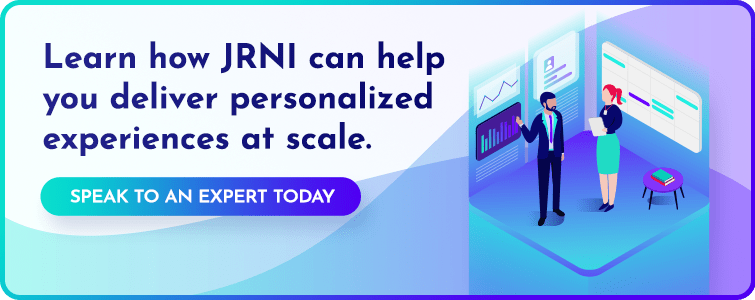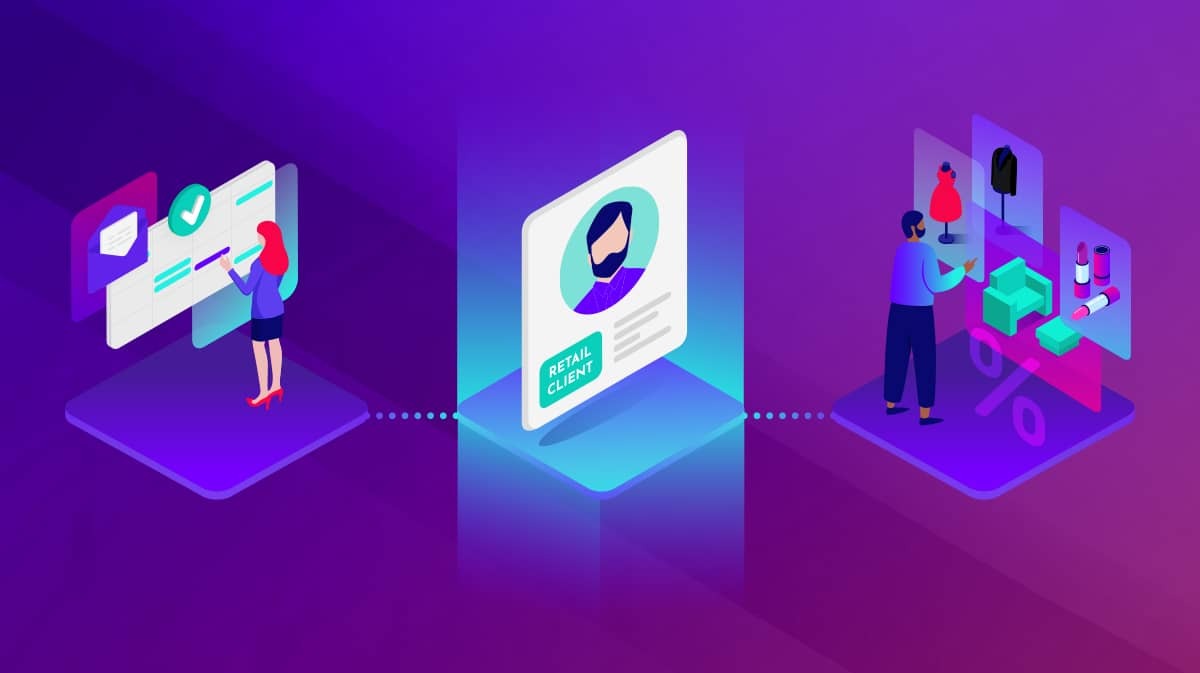“By failing to prepare, you are preparing to fail.”
When it comes to appointment scheduling, this quote from Ben Franklin hits the nail on the head.
Ensuring your staff is as prepared as possible for every appointment your customers book is how you turn a standard meeting into personalized experience, and ultimately, a growth channel.
A recent study from Forrester Consulting looked at the Total Economic Impact™ of using JRNI. The researchers tracked results for a major enterprise with over $3 billion in revenue and 200+ locations. The results over three years include:
- 60% annual increase in appointment volume
- $3.1 million in increased profit from appointments
- 143% ROI
That’s why you can’t leave your appointments to chance.
Preparation is key. In this article, we’ll walk through the steps your staff should take to prepare for customer appointments so they can ensure customers walk away happy and stay loyal to your business.
Make sure they’re going to the right place for their needs
Appointments provide a great opportunity for in-depth conversations and consultation on complex questions and tasks. But they aren’t the answer for everything a customer might need from you.
In-store may not always be the best channel for simple tasks. If a customer just wants to make a routine transaction, or just has a simple question, you can point them to self-serve resources that will save everyone’s time. For example, research from McKinsey showed that while many consumers prefer going to their physical bank branch for complex questions and account servicing, many consumers are completely comfortable handling the simple tasks online.
Even within your appointment program, you likely have different staff handling different services via appointments. A home goods retailer, for example, wouldn’t want to have its decorating experts taking on appointments for customers that want to get a home entertainment system set up.
Before your staff confirms an appointment with a customer, make sure the right staff member is taking them on. An appointment scheduling solution with multi-mode appointments should make it simple to switch staff members and ensure the right people are in the right place.
Prepare for in-person and remote appointments
COVID-19 has had a dramatic impact on consumer behavior.
Recent research from McKinsey revealed that consumers are still avoiding out-of-home activities that aren’t completely essential. When they do go out in public, whether to a store or to the bank, they are shopping at businesses that clearly care for their safety.
While some consumers are willing to venture out with the proper precautions, many are still not ready. That’s why it’s crucial that your appointment program is flexible enough to offer both in-person and remote appointments. Remote appointments give customers the benefit of talking face-to-face with your staff with none of the health risks of being in public while COVID-19 is still a threat.
The best appointment scheduling software will be robust enough to offer this sort of flexibility. But regardless of whether your staff are meeting customers virtually or in-person, the level of preparation should be the same. Staff should understand incoming customers as deeply as your data allows them to.
The difference comes in how the format of the meeting impacts how products can be shown and discussed. On a remote appointment, visuals will be vital to make up for the fact that staff can’t physically put something in front of customers. Make sure to prepare any useful supplemental materials that can be sent over in advance of the customers’ appointment if they’re choosing a remote option.
“Regardless of whether your staff are meeting customers virtually or in-person, the level of preparation should be the same. Staff should understand incoming customers as deeply as your data allows them to.”
Get your staff’s knowledge up to date
According to our latest Modern Consumer Research, 56 percent of US consumers prefer shopping in-store to get questions answered, while 46% think that brick-and-mortar locations are a better place to get product/service explanations.
In an omnichannel experience, physical locations are their own touchpoint with unique strengths. Those strengths come back to having knowledgeable staff that can help people make the best decisions without necessarily feeling pressured to buy something. Having a customer book an appointment only to leave without useful answers is how you leave money on the table.
If you have new products or services, or if something that affects customers has changed, be sure your staff knows about it and can answer any questions confidently and quickly.
For example, if you’re a retailer offering personal shopping services, staff should be ready to answer questions customers have around bringing new styles and lines into their wardrobe. If you’re a bank offering a new checking account for students, be sure your staff is well-trained on explaining the fee structure, minimums, etc.
Review the customer’s history
Before the customer’s arrival for an appointment, staff should look at past appointments and see what has been reviewed and discussed. This will prevent the customer from getting frustrated at repeating him or herself, but more importantly, it’s how you ensure every appointment is personalized.
According to research from Boston Consulting Group, “companies that implement personalization initiatives and become best in class in delivering personalized experiences can quadruple the revenue lift they receive from their personalization initiatives.”
Personalization means that customers don’t just have generic encounters with your staff. Their history and context relative to your business are taken into account and fuels every interaction. By reviewing past appointments and purchases, staff can have an up-to-date look at what each individual customer has seen and done with them.
Prepare something new for the customer
One of the best ways to keep your repeat customers excited and coming back for more is to show them something new they haven’t seen or thought of before. While this might not be applicable to a one-off appointment, it’s absolutely something your staff should be doing for recurring appointments.
This is where you need to trust your staff to make decisions about what they want to show a customer based on what they liked, disliked, and purchased in the past. As part of their preparation, they should do some research and plan to show them something new as often as they can.
If you’re noticing a pattern here, it’s that your staff need to be sure that appointments are not just transactional. They’re just as much about long-term relationship-building, and providing guidance, at times, before a customer knows they have a need.
Our Modern Consumer Research also looked at why consumers like going to events in stores. The biggest draw for events by far was getting early access to new products. With large events on hold for the foreseeable future, why not leverage appointments to give your best customers a chance to get a jump on the latest products and trends?
“Our Modern Consumer Research also looked at why consumers like going to events in stores. The biggest draw for events by far was getting early access to new products. With large events on hold for the foreseeable future, why not leverage appointments to give your best customers a chance to get a jump on the latest products and trends?”
Send reminders
Missed appointments are costly. All the time your staff spent preparing, and the unwanted downtime they now have, represent wasted time and money. Keeping appointment attendance high is vital for ensuring your in-person services deliver the business value you need.
To reduce the likelihood of a customer no-showing, send a confirmation of the appointment at the time of their booking, and reminders a day before their appointment. Reminders should come through multiple channels, based on each customer’s preference. Email and SMS are the most common ways to send reminders, and using both channels increases the chances customers see them.
If you’re booking appointments manually, you’ll also have to follow up manually. This can lead to missed opportunities if staff forget to send timely reminders. As appointment volume increases, so do the chances of missing an appointment.
That’s where appointment scheduling software comes in. A robust appointment solution will send automated reminders based on your customers’ preferences, reducing the manual work and human error that come with following up.
Follow up and gather feedback
While this technically happens after an appointment, you’re setting yourself up for success in your next appointment with the customer by following up. Staff should take the opportunity to recap everything that was discussed, and break down what was covered during the appointment so the customer can take action on all relevant items.
A follow-up is also a perfect time to gather feedback to improve the experience your staff provided. It’s easy to pay lip service to the idea of valuing your customer’s feedback, and another to really take the time to gather data and use it to improve the experience. Gathering feedback allows you to:
- Find the most pressing issues customers have with your service and resolve them quickly
- Increase the likelihood of delivering positive experiences for customers in the future
- Predict and plan for future needs. If multiple customers are asking for something you don’t yet provide, you can get in front of it and find ways to offer new services the market wants.
Asking for and incorporating feedback is how you build trust with your customers. According to a 2019 study from Edelman, 81% of consumers say that brand trust has a positive impact on their decision to give a company their business. RightNow found that almost 90% of consumers will shop with your competitors after receiving poor customer service.
Don’t wait for your customers to abandon you to diagnose and solve problems with your appointments. Be proactive and stay on the lookout for ways to delight customers at this crucial touchpoint.
“81% of consumers say that brand trust has a positive impact on their decision to give a company their business.”
Edelman, 2019
With JRNI, staff can easily manage all aspects of appointments - from booking, rescheduling, and canceling, to editing customer details and updating appointment outcomes.
If you want to learn more about how JRNI empowers your staff to easily prepare for appointments and provide a unique, personalized experience, then request a demo to speak with an expert!




